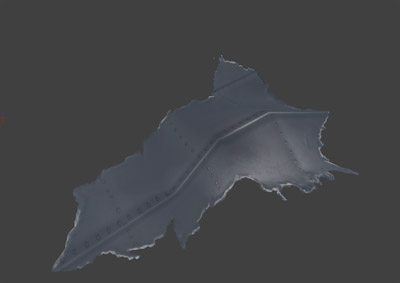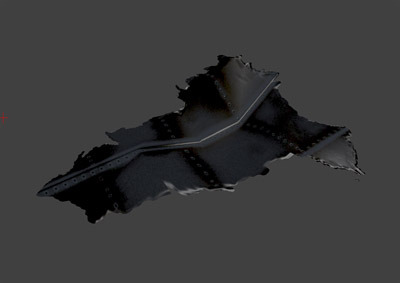The BRAWL² Tournament Challenge has been announced!
It starts May 12, and ends Oct 17. Let's see what you got!
https://polycount.com/discussion/237047/the-brawl²-tournament
It starts May 12, and ends Oct 17. Let's see what you got!
https://polycount.com/discussion/237047/the-brawl²-tournament
2 Sided material problem
Hey, silly question since it should be kinda simple, but I'm not sure what I'm doing wrong.
I have metal sheets, which I want to render 2 sided. It's a complex material that uses reflections, vertexcolors, etc.
A simple extra prop with this material looks like this on the front side:

If I turn on 2-sided in the material, the back doesn't look the same as the front, rather messed up actually:

I think it's some sort of vector that isn't getting flipped. 2 Sided separate pass does nothing btw.
If I then try to duplicate the mesh and flip the normals, while turning off 2-sided in the material, my mesh goes al messed up:

This might be something with the ASE export options, not sure.
Anybody have a tip on how to handle this? Right now my options are either see through or an overly contrasting backside...
I vaguely remember once reading about applying a different material to the backside of a mesh, how does one do that ? Or am I imagining things?
I have metal sheets, which I want to render 2 sided. It's a complex material that uses reflections, vertexcolors, etc.
A simple extra prop with this material looks like this on the front side:

If I turn on 2-sided in the material, the back doesn't look the same as the front, rather messed up actually:

I think it's some sort of vector that isn't getting flipped. 2 Sided separate pass does nothing btw.
If I then try to duplicate the mesh and flip the normals, while turning off 2-sided in the material, my mesh goes al messed up:

This might be something with the ASE export options, not sure.
Anybody have a tip on how to handle this? Right now my options are either see through or an overly contrasting backside...
I vaguely remember once reading about applying a different material to the backside of a mesh, how does one do that ? Or am I imagining things?
Replies
Its difficult to pin point exactly what It could be without playing with the material, I'd suggest working backwards, removing different effects and seeing if any certain effect is causing it.
I think I can guess it's because some of the transform and reflect nodes I have in there, I don't really wanna lose those as it took hours to get the material just right.
I'm more curious as to why a mesh that actually has 2 sides, goes all messed up. It looks like it's merging verts or something. It shouldn't be hard to get a mesh like that into Unreal...
So if you took a finished low-poly model in Max and detached each face to a separate element within the object before exporting to UE3, it will actually still import the exact same way! This is something to be wary of with floating or intersecting geometry too, basically if you have two verts near each other that you don't want to get welded together on import make sure they are different smoothing groups.